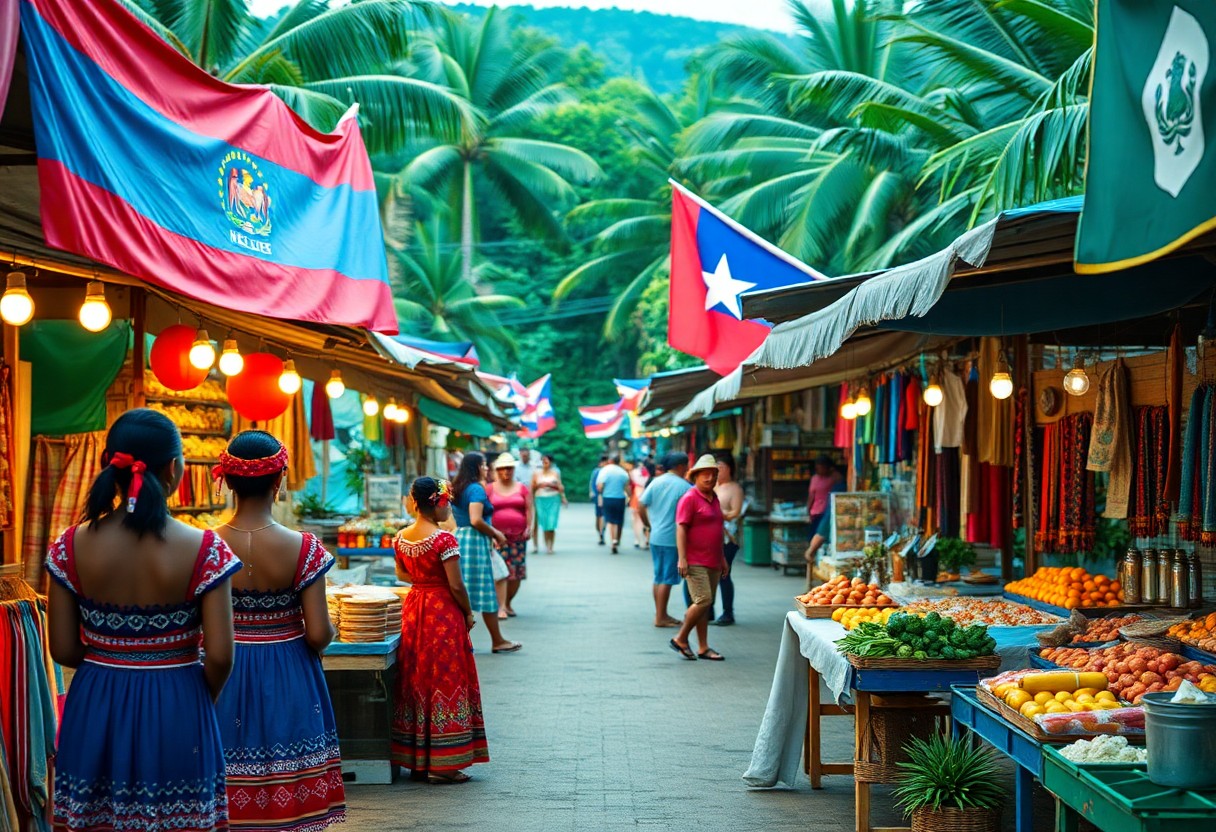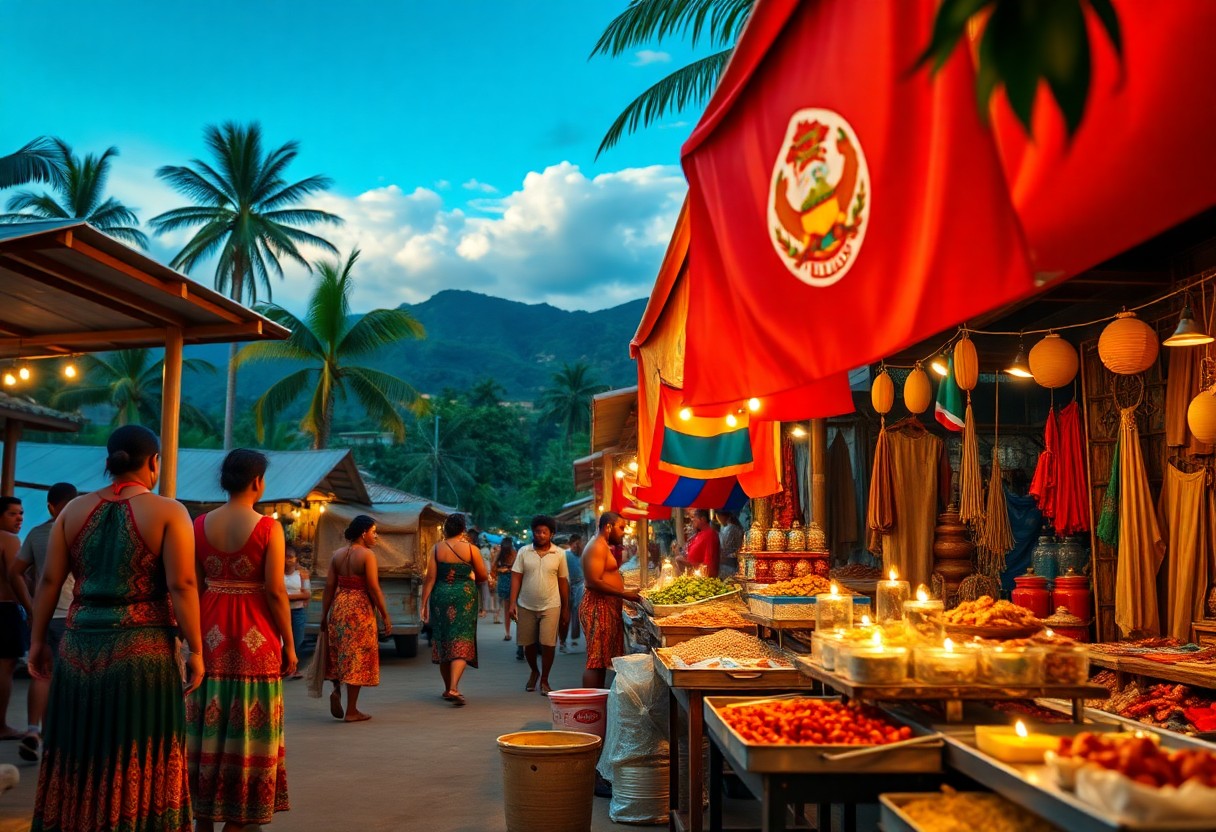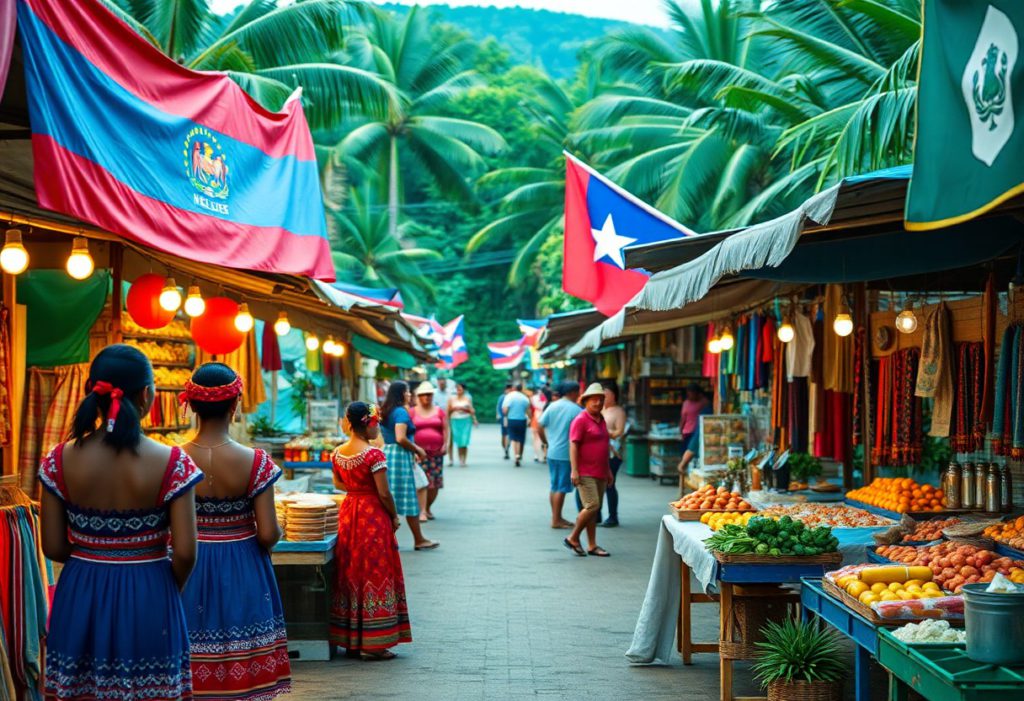The cultural landscape shared between Belize and Honduras is not only captivating but also rich in history and diversity, which may surprise many who are unfamiliar with these neighboring countries in Central America. Both nations boast unique historical connections and distinctive characteristics that play a significant role in shaping their national identities. While both countries exhibit Spanish colonial influences, Belize stands out prominently due to its rich English-speaking heritage, which sets it apart from Honduras. As you embark on a journey through these countries, you will encounter a complex linguistic and ethnic diversity, marked by indigenous populations, vibrant Garifuna communities, and a blend of cultural backgrounds, each contributing to a rich social tapestry. Understanding the nuanced differences between Belize and Honduras can offer you deeper insights into the vibrant regional dynamics that define Central America.
Explore the Distinctive Geography and Border Interactions Between Belize and Honduras
As you immerse yourself in the geographical attributes of Belize and Honduras, you’ll discover a pair of neighboring countries enriched with fascinating territorial characteristics. Their geographical positioning within Central America provides a unique perspective on the region’s diversity, showcasing distinct coastal and inland terrains that significantly shape their national identities and environmental profiles. Each country is adorned with unique geographic elements, ranging from lush jungles to stunning beaches, which not only enhance their natural beauty but also play a pivotal role in their cultural and economic activities. The interplay of geography and culture in these nations is essential for understanding their identities.
Uncover the Proximity and Coastal Marvels of Belize and Honduras
Set against the vibrant backdrop of the Caribbean Sea, Belize and Honduras share a maritime border that reveals impressive coastal landscapes, making them popular among travelers. Belize is renowned for its breathtaking 386-kilometer coastline, dotted with numerous coral reefs and thriving marine ecosystems that attract nature lovers and adventure seekers alike. Conversely, Honduras boasts approximately 820 kilometers of Caribbean shoreline, presenting a variety of diverse marine environments ripe for exploration. This shared coastal environment not only offers stunning vistas but also underscores the critical importance of marine conservation efforts in both nations, ensuring that these natural treasures remain protected for future generations.
Comprehending Land Borders and Their Influence on Regional Dynamics
The coastal boundaries serve as a defining element in the territorial interactions between Belize and Honduras, both strategically positioned within Central America. You’ll observe that Belize is bordered by Guatemala to the west and south, while Honduras lies to the southeast, resulting in a complex geopolitical landscape that influences regional dynamics and cultural exchanges. This geographical positioning creates opportunities for trade and collaboration, while also posing challenges related to border management and security. Recognizing these factors is crucial for understanding the political landscape of the region.
Moreover, the land borders are more than just administrative lines; they embody significant historical and political narratives. The ongoing Guatemala-Belize territorial dispute exemplifies notable geopolitical tensions, with unresolved claims that could impact regional stability. These border complexities reflect deep-rooted historical colonial legacies and current diplomatic negotiations, emphasizing the intricate relationships and interactions among these Central American nations. By delving into these challenges, you can gain a clearer view of the political landscape that shapes the lives of the people in these countries.

Dive Into the Language and Ethnic Tapestry of Belize and Honduras
As you embark on a journey to explore the fascinating linguistic and ethnic landscapes of Belize and Honduras, you will find that cultural diversity plays a critical role in shaping national identities. The interplay of languages and ethnic groups reveals complex historical narratives that define these Central American nations, providing you with valuable insights into their rich social fabric. This exploration of language and ethnicity highlights how historical migrations and colonial influences have forged unique identities within each country, enriching their cultural heritage.
Contrasting Official Languages: English in Belize vs. Spanish in Honduras
One of the most striking contrasts between these nations lies in their choice of official languages; Belize proudly stands out with English as its official language, while Honduras predominantly communicates in Spanish. This linguistic distinction is deeply rooted in their colonial histories, with Belize maintaining its British colonial heritage while Honduras reflects the influences of Spanish imperialism. Understanding these language dynamics not only highlights their distinct cultural backgrounds but also facilitates communication and social interactions in each country, allowing for a more profound appreciation of their respective cultures.
Rich Ethnic Composition and Cultural Heritage in Both Nations
At the core of both nations lies a rich ethnic diversity. Belize is home to a vibrant mix of Creole, Garifuna, Maya, and Mestizo populations, while Honduras features similar yet distinctly composed ethnic groups. You will appreciate how these diverse communities contribute to the rich cultural tapestry of each country, showcasing a variety of traditions, art forms, and social practices that enrich their identities. Acknowledging these differences can deepen your understanding of each nation’s unique cultural heritage.
Furthermore, beyond the visible diversity, it is essential to recognize that each ethnic group carries profound historical significance. The descendants of the Maya in both countries diligently preserve ancient traditions, while Garifuna communities maintain unique cultural practices that have withstood the test of time. It is crucial to acknowledge how these ethnic groups have historically resisted cultural erasure, successfully maintaining their languages, ceremonies, and social structures despite significant external pressures. This resilience speaks volumes about the strength of their cultural identities and the importance of preserving their heritage.

Experience the Tourism Highlights of Belize and Honduras
The tourism sectors of Belize and Honduras present unique experiences that attract international travelers seeking a wide range of adventures. Both countries boast stunning natural landscapes, rich marine environments, and culturally significant heritage sites that provide compelling reasons to explore their territories. Belize’s tourism industry emphasizes eco-adventures and marine attractions, while Honduras highlights its archaeological sites and breathtaking coastal destinations. Each destination offers travelers distinctive opportunities to immerse themselves in the beauty of Central America through different lenses and experiences, making them must-visit locations for any traveler.
Discover the Wonders of the Belize Barrier Reef
Undoubtedly, the most spectacular marine attraction in Belize is the Belize Barrier Reef, which stretches approximately 190 miles along the coastline. This UNESCO World Heritage site offers unparalleled snorkeling and diving opportunities that are truly unforgettable. The reef is home to an incredible diversity of marine life, including vibrant coral formations, a variety of tropical fish, and endangered species such as manatees and sea turtles, making it a paradise for marine enthusiasts and eco-tourists alike. Engaging with this natural wonder allows visitors to witness the breathtaking beauty of marine ecosystems firsthand.
Exploring the Enchanting Bay Islands of Honduras
To uncover Honduras’s maritime treasures, you should explore the enchanting Bay Islands. These Caribbean islands offer world-class diving experiences and pristine beaches that are perfect for relaxation and exploration. Roatán, the largest island, captivates tourists with its vibrant marine ecosystem and laid-back atmosphere, making it a popular destination for travelers seeking both adventure and leisure. The Bay Islands are a gem in Honduras’s crown, providing a unique blend of natural beauty and cultural richness.
Due to their strategic location, the Bay Islands provide exceptional marine biodiversity. You will have the opportunity to experience the world’s second-largest barrier reef system, which makes it a premier destination for underwater enthusiasts. The islands showcase a unique cultural blend influenced by indigenous, Garifuna, and international communities. However, potential dangers such as strong currents and marine wildlife exist, so you should always engage with professional guides and follow safety recommendations when exploring these stunning maritime environments. This ensures a safe and enjoyable experience as you connect with nature.

Analyzing the Economic Landscape of Belize and Honduras
It is important to recognize that Belize and Honduras share complex economic landscapes, each with distinct challenges and opportunities. Belize’s economy is relatively smaller and primarily service-oriented, while Honduras relies heavily on agricultural exports. Both countries face vulnerabilities in their economic structures, characterized by limited diversification and dependence on external markets. You will find that their GDP structures reflect historical colonial influences and current global economic pressures, creating intertwined yet uniquely challenging economic trajectories that shape their development.
Key Industries and Trade Relationships of Both Nations
With agriculture, manufacturing, and services serving as the backbone of both economies, you will notice notable variations in their industrial compositions. Belize excels in producing and exporting sugar, bananas, and citrus fruits, while Honduras is a leader in coffee and textile production. Your understanding of their trade dynamics reveals the United States as a primary trading partner for both nations, with emerging relationships in regional markets such as CARICOM and Central American economic zones that enhance their trade opportunities. These relationships are crucial for fostering economic growth and stability in the region.
Tourism as a Vital Economic Force in Both Countries
Behind the economic curtain, tourism emerges as a critical economic driver for both Belize and Honduras. You’ll discover that Belize’s tourism sector contributes a more substantial percentage to its GDP compared to Honduras, with eco-tourism and marine attractions playing pivotal roles in attracting international visitors. Analyzing the contributions of tourism reveals the transformative potential it holds for both nations’ economies, indicating how vital this sector is for sustainable development.
Tourism represents a vital economic force for both countries. Belize’s tourism industry generates approximately 40% of its GDP, focusing on marine ecosystems, Mayan archaeological sites, and pristine coastal environments that draw travelers from around the globe. In contrast, you will find Honduras developing similar strategies, leveraging its archaeological heritage and Caribbean coastlines. The tourism sector not only provides direct employment opportunities but also stimulates ancillary economic activities, paving the way for sustainable economic development in both nations. This symbiotic relationship between tourism and the economy is essential for their growth.
Dispelling Myths and Understanding the Reality of Belize and Honduras
Not every narrative surrounding Belize and Honduras aligns with actual experiences. Your understanding of these countries may be influenced by outdated stereotypes or limited information. Media representations frequently distort the nuanced cultural landscape of these Central American nations, often presenting oversimplified narratives that fail to encompass the complex realities of daily life, social dynamics, and cultural richness present in both countries. By confronting these misconceptions, you can gain a more accurate and comprehensive view of what life is truly like in these nations.
Addressing Safety Concerns and Common Misconceptions
When considering travel to these nations, perceptions of safety can vary dramatically from the realities on the ground. While Honduras may have higher crime rates, Belize is often characterized by relatively safer urban and tourist environments. You will find that specific regions within both countries exhibit varying safety levels, and smart traveler precautions can significantly mitigate potential risks, allowing for a rewarding travel experience. This understanding is crucial for ensuring a safe and enjoyable journey through both countries.
Understanding Cost of Living and Travel Expectations
Across Central America, you may find your budget expectations pleasantly surprising. Belize tends to be more expensive, largely due to its developed tourism infrastructure and English-speaking environment, whereas Honduras generally offers more affordable living and travel experiences. Local economic conditions play a significant role in influencing pricing structures, and understanding these differences will help you plan your visit effectively. Recognizing these economic factors will allow you to tailor your travel experience according to your budget.
The perception of travel expenses in Belize and Honduras unveils intriguing economic contrasts. Belize’s higher costs are primarily attributed to its developed tourism sector and international accessibility. You will likely find accommodation, dining, and transportation options in Belize priced at premium rates compared to Honduras, where your daily expenses might range from $30 to $80, depending on your travel style and chosen destinations. In contrast, a visit to Belize could range from $50 to $150 per day, reflecting the varying economic landscapes and travel experiences available in both countries.
Delve into the Culinary Traditions of Belize and Honduras
As you traverse the gastronomic landscapes of Belize and Honduras, you’ll uncover fascinating culinary connections alongside unique distinctions. Both countries exhibit Caribbean and Latin American influences, culminating in vibrant food cultures that reflect their rich historical backgrounds. While Belizean cuisine showcases a broader multicultural diversity, Honduran gastronomy maintains stronger ties to indigenous roots, offering you a delectable journey through regional flavors and traditional cooking techniques that define each nation’s identity. This culinary exploration is essential for appreciating their cultural uniqueness.
Influences Shaping Belizean Cuisine
The traditions of Belizean cooking emerge from a remarkable cultural melting pot, integrating elements from Creole, Garifuna, Maya, and European culinary practices. You’ll find your plate enriched with ingredients and techniques that reflect Mayan agricultural heritage, British colonial contributions, and African cooking methods, creating a uniquely diverse gastronomic experience that sets Belize apart in the realm of Central American cuisine. Each dish tells a story, bringing together the flavors and traditions of its diverse cultural influences.
Honduran Gastronomy: A Taste of Tradition
Rooted in Honduras’s culinary identity is a robust agricultural tradition that significantly shapes your dining experience. You’ll encounter meals characterized by staples such as corn, beans, and locally sourced proteins, reflecting the profound influences of indigenous Maya traditions as well as Spanish colonial legacies that have intricately structured Honduran food culture over the centuries. The use of fresh, local ingredients is paramount, showcasing the rich agricultural resources of the country.
Moreover, Honduran cuisine offers you remarkable regional variations. Coastal regions are known for their abundant seafood dishes, while mountainous areas specialize in hearty meat-based preparations. Signature dishes like baleadas (wheat tortillas filled with beans, cheese, and cream) and pastelitos (savory pastries filled with meat) exemplify the nation’s culinary complexity and provide a tantalizing glimpse into Honduras’s rich gastronomic heritage. Each dish embodies the culture and traditions of the people, making culinary exploration a vital part of understanding both nations.
As you explore the cultural landscapes of Belize and Honduras, you will uncover a fascinating tapestry of shared heritage alongside distinct identities. It becomes apparent that while both nations are united by their Caribbean roots and Spanish colonial influences, Belize stands out due to its unique English-speaking background and diverse ethnic composition. Your exploration of these countries reveals nuanced differences in language, traditions, and social structures that make each nation significant in its own right. By examining their historical trajectories and cultural dynamics, you will gain insights into how geographical proximity does not always equate to cultural uniformity. Your journey highlights the rich complexity of Central American societies and their vibrant, evolving identities.
Commonly Asked Questions About Belize and Honduras
What are the primary linguistic differences between Belize and Honduras?
Belize stands out as an English-speaking nation, with English serving as its official language, while Honduras primarily communicates in Spanish. This linguistic distinction arises from Belize’s British colonial history, whereas Honduras developed under Spanish colonial influence. The difference in language significantly impacts communication, education, and cultural interactions in both countries, shaping the intricate social landscape that defines each nation.
How do the ethnic compositions of Belize and Honduras differ?
Belize showcases remarkable ethnic diversity, with a population made up of Creole, Garifuna, Mestizo, Maya, and other groups. In contrast, Honduras has a more homogeneous population, predominantly consisting of Mestizo individuals. Belize’s multicultural landscape reflects its unique historical migrations and colonial experiences, resulting in a more diverse social fabric compared to Honduras’s more uniform ethnic structure. This diversity enriches the cultural experience in Belize, making it distinct from its neighbor.
What economic factors differentiate Belize from Honduras?
Belize possesses a smaller yet more tourism-oriented economy, generating significant income from marine tourism, agricultural exports like sugar, and offshore financial services. In contrast, Honduras relies more heavily on agricultural exports, such as coffee and bananas, with a larger agricultural sector and lower per capita income. Belize’s economic model emphasizes service industries and international tourism, while Honduras maintains a more traditional farming and manufacturing-based economic approach, leading to different economic challenges and development paths.
The Article Belize vs. Honduras: Cultural Similarities and Key Differences appeared first on Belize Travel Guide
The Article Belize vs. Honduras: Exploring Cultural Similarities and Differences Was Found On https://limitsofstrategy.com


